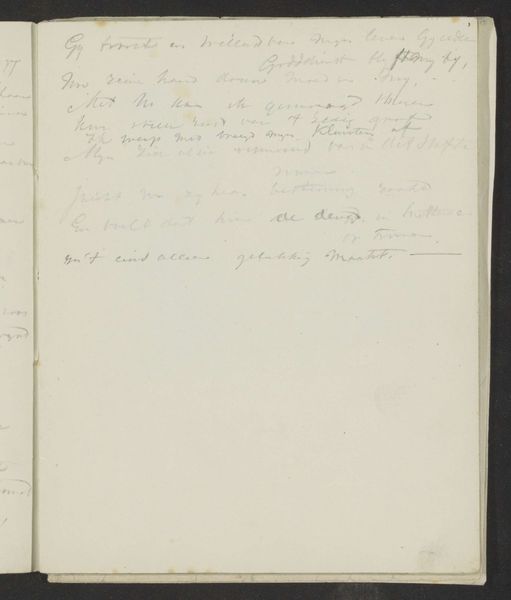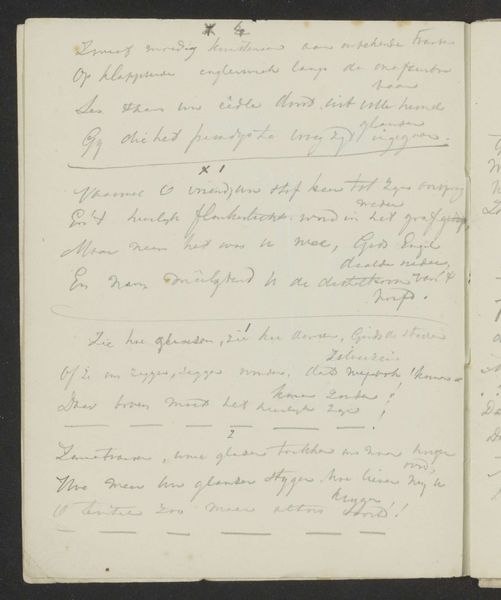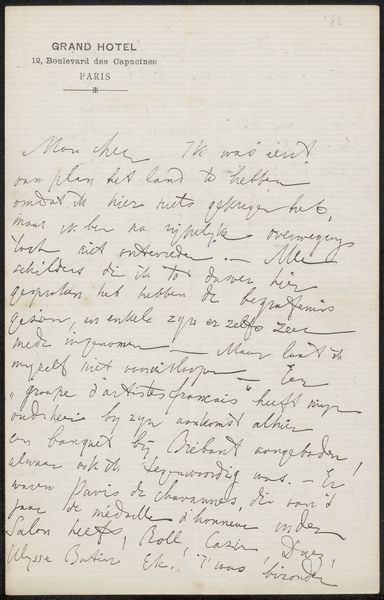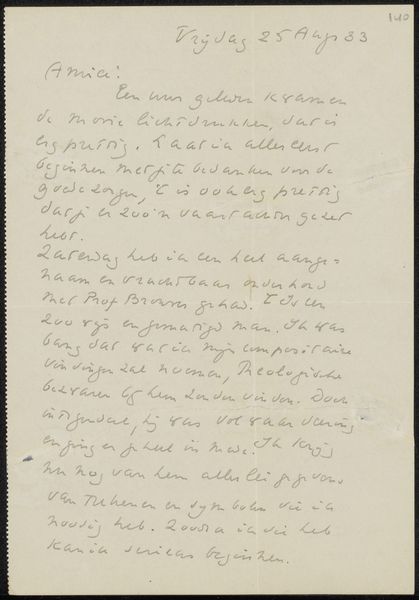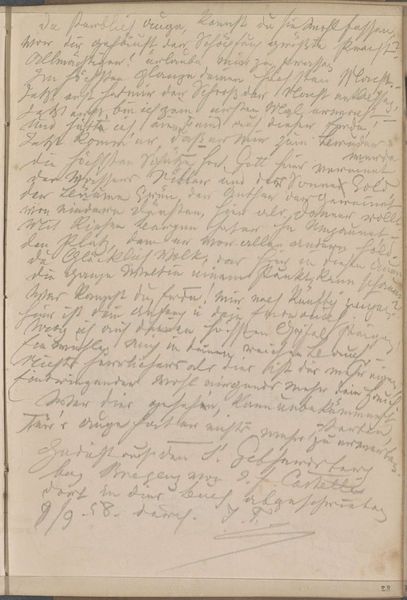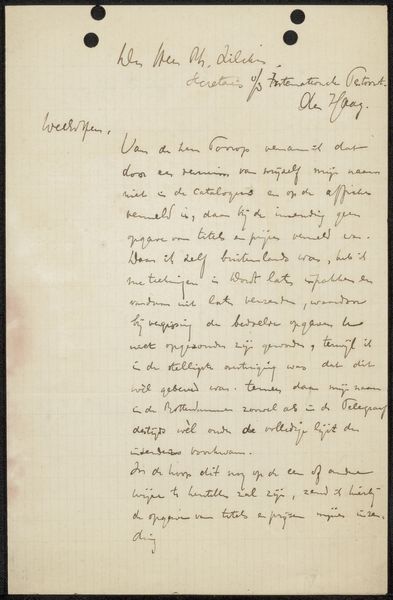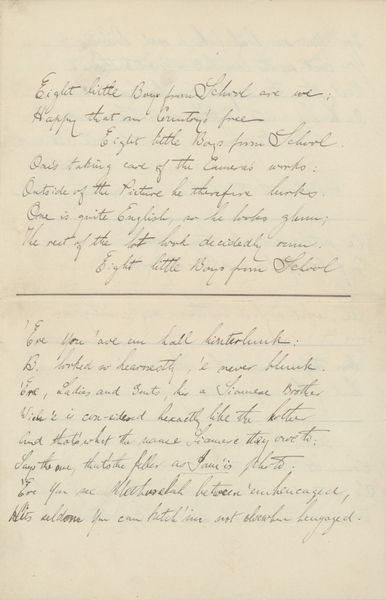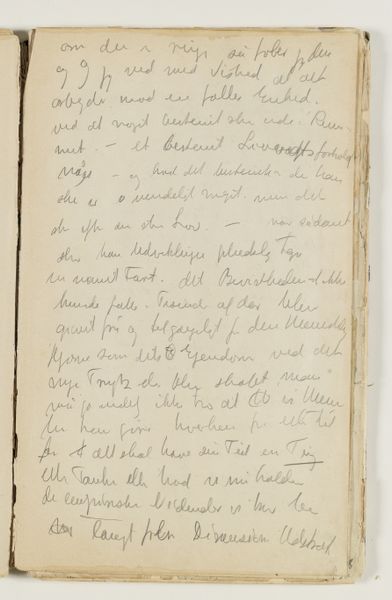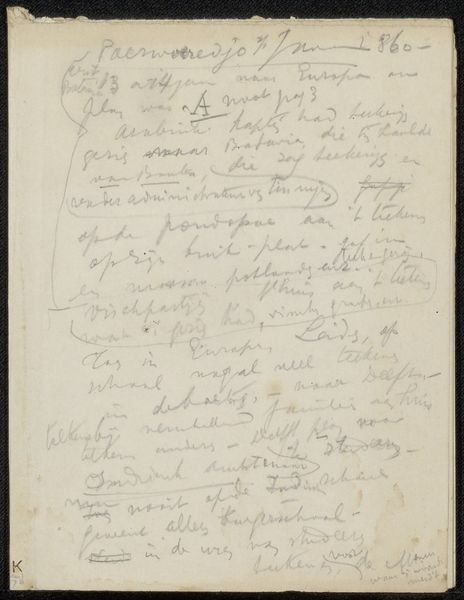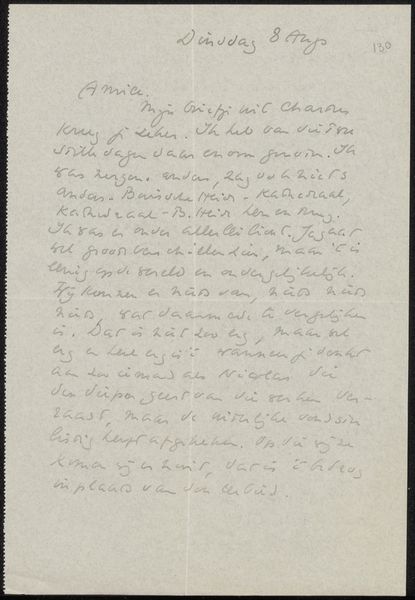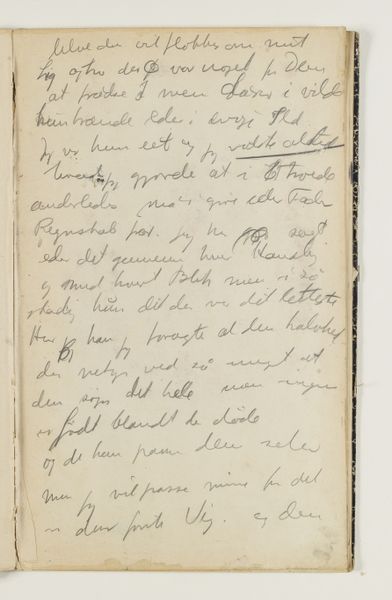
drawing, paper, ink, pen
#
drawing
#
script typography
#
hand-lettering
#
hand drawn type
#
hand lettering
#
personal journal design
#
paper
#
personal sketchbook
#
ink
#
hand-drawn typeface
#
thick font
#
sketchbook drawing
#
pen
#
small lettering
Copyright: Rijks Museum: Open Domain
Editor: Here we have "Gedicht" by Maria Vos, likely from sometime between 1834 and 1906, judging from the dates provided. It appears to be ink on paper, perhaps a page torn from a sketchbook. The handwriting gives it an intimate, personal feel. What strikes me is the physical act of writing itself, pressing pen to paper to form these words. What can you tell me about it? Curator: Absolutely. This piece is fascinating when viewed through the lens of its materiality and the labor involved in its creation. Note the repetitive, almost meditative quality of the hand-lettering. Consider the paper itself - what kind was it? How was it manufactured? How readily available was paper during Vos’s time? This isn't simply about expressing a thought, but engaging in a very physical, tangible process, highlighting the labor of art making and its connection to the means of production available to Vos. Editor: So you're saying the value isn't just in the words, but also in the effort and resources used to write them down? Curator: Precisely! It’s a resistance to prioritizing the conceptual over the material. The social context here is crucial too. Was this for personal use? A gift? How might the act of hand-copying text challenge existing forms of mass-produced material, such as print? The act becomes a political one in itself. The materials used and process by which Vos created the "Gedicht" invites us to investigate artistic production, distribution and the relationship of craft and "high" art at the time. Editor: I hadn't thought of it that way before, focusing more on the emotional content. Now, I’m appreciating the value inherent in the material object and the manual effort itself. Thanks! Curator: And I am more interested to know about how such pieces like these relate to digital writing. The manual feel seems so much warmer!
Comments
No comments
Be the first to comment and join the conversation on the ultimate creative platform.
